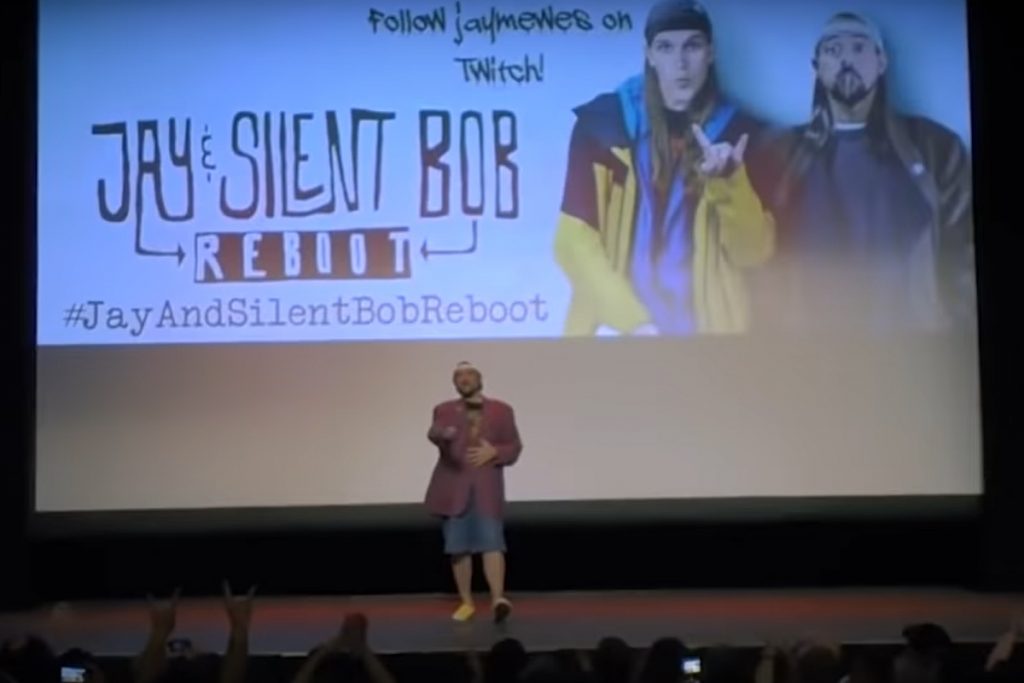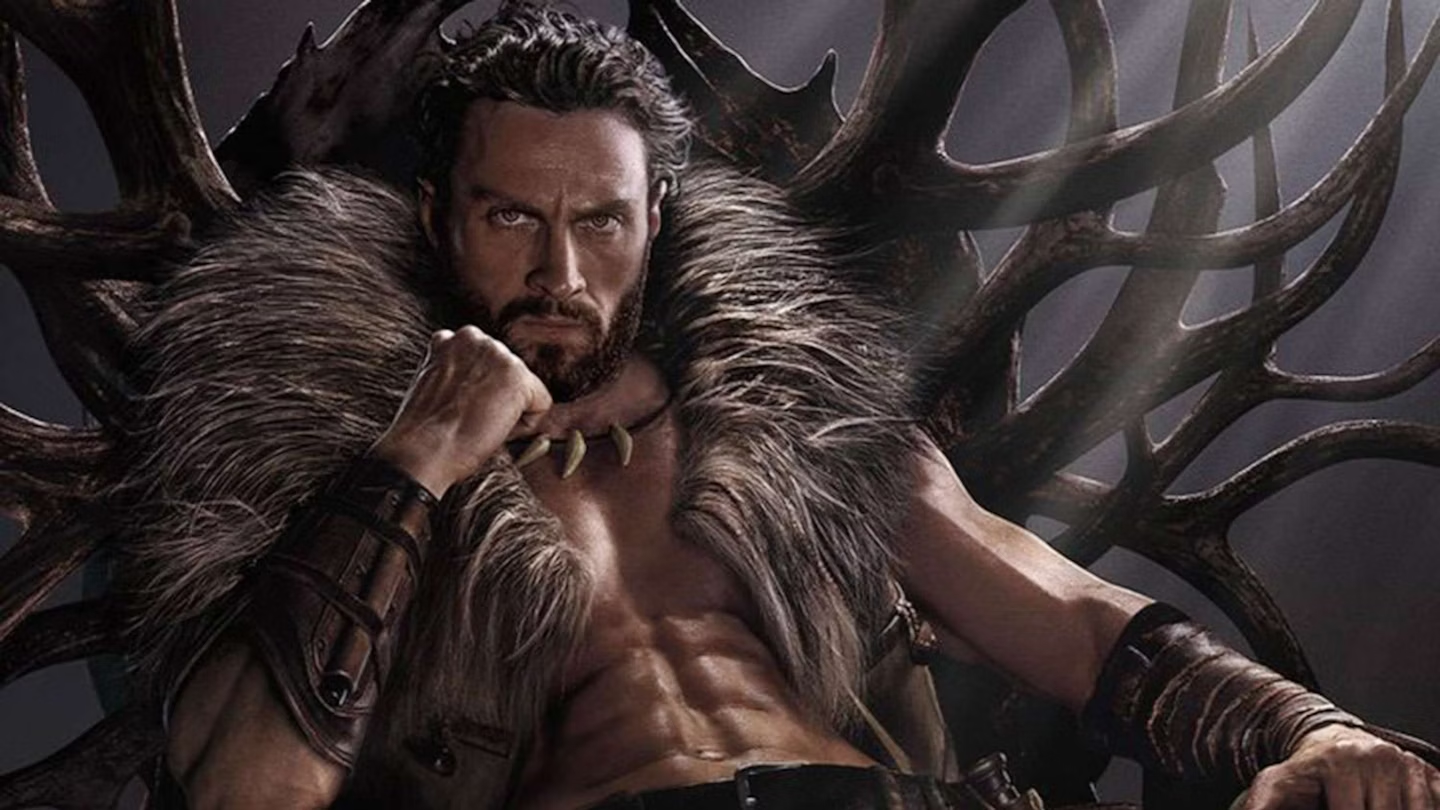Despite everyone remaining at home this year, tradition still stood true at this year’s San Diego Comic-Con. While many directors make regular appearances in Hall H each year, there is only one director that annually receives his own panel regardless of whether or not he has a movie to promote. Since 1995, Kevin Smith has graced the stage of San Diego Comic-Con to basically just chat with the fans. While this year is a little different, he makes up for it by filling our ears with everything he’s been up to in the past year, as well as some new projects on the horizon.
 Smith began the panel exactly where he left off last year, presenting the first look at his most recent film, Jay and Silent Bob Reboot. From October 2019 to February 2020, Smith hit the road along with his co-star and “hetero-life mate” Jason Mewes for the “Jay and Silent Bob Reboot Roadshow Tour”. The dynamic duo took the movie from coast to coast and even overseas, packed to the rafters with diehard fans of the View Askewniverse. Days after the tour ended, COVID-19 shut everything down. However, Smith makes it clear that no pandemic is mighty enough to stop the Smodfather.
Smith began the panel exactly where he left off last year, presenting the first look at his most recent film, Jay and Silent Bob Reboot. From October 2019 to February 2020, Smith hit the road along with his co-star and “hetero-life mate” Jason Mewes for the “Jay and Silent Bob Reboot Roadshow Tour”. The dynamic duo took the movie from coast to coast and even overseas, packed to the rafters with diehard fans of the View Askewniverse. Days after the tour ended, COVID-19 shut everything down. However, Smith makes it clear that no pandemic is mighty enough to stop the Smodfather.
Ever since the fall of last year, Smith has been serving as showrunner for “Masters of the Universe: Revelation”, a Netflix sequel series to the popular 80s series “He-Man and the Masters of the Universe”. While he couldn’t show us any trailers or official images (though he did tease us with a gag portrait of Skeletor in a suggestive pose), he informed us that dialogue recording has been completed and he has seen early animatics of the show.
Smith also plugged his new dedicated fan club site, That Kevin Smith Club. ThatKevinSmithClub.com includes a decade-long library of nearly all his weekly podcasts (the exception being Hollywood Babble-On, which is available at TheRalphReport.com), as well as countless interviews and TV appearances featuring Smith & Co. A welcome new addition to the Club is a morning show titled “Wake & Bake”, in which Smith reads from old production journals, unused screenplays, and of course does as the title suggests. The club has four tiers of membership that include different levels of access to the site’s content, as well as exclusive merchandise delivered to your door every 3 months. The tiers are Clerk ($5/month), Mallrat ($10/month), Funployee ($15/month) and Yoga Hoser ($30/month).
Next, Smith played to the fans of the horror genre, unveiling the first look at his long-in-development anthology film, “Killroy Was Here”. Filmed prior to “Jay and Silent Bob Reboot”, “Killroy” has been sitting on the back burner for nearly three years. Originally conceived as a Krampus-themed film co-written by Smith and his “Edumacation” co-host Andy Mcelfresh, “Killroy Was Here” provides a modern-day urban legend look at the character of Kilroy. Kilroy was made famous by American GIs that would draw the mysterious long-nosed figure peering over walls where they were stationed or had visited, including the caption “Kilroy Was Here”. In Smith’s version, Killroy (adding an extra L) was once Roy Huggins, a man left horribly disfigured after literally having his face melted. Smith describes his version of the character as “The Kid Avenger…ya know, if you F— with kids, Killroy will show up.” “Killroy Was Here” is targeting a release in early 2021.
Smith closed out the panel by giving an official announcement regarding his long-talked-about Mallrats sequel, “Twilight of the Mallrats”. Smith had been trying to get a Mallrats sequel off the ground for the better part of five years, but the success of “Reboot” renewed Universal’s interest. “Twilight of the Mallrats” will see Brodie Bruce (once again played by Jason Lee) dealing with the dying nature of his beloved mall in a post-pandemic world all while tackling fatherhood. The screenplay has been completed and filming is currently targeting a 2021 start date.
For more information on Kevin Smith and all his upcoming projects head over to ThatKevinSmithClub.com and be sure to check out That’s My Entertainment’s podcast, “An Askewed View” wherever you listen to podcasts!

Movie
‘Mufasa: The Lion King’ Will Leave You Breathless

“Mufasa: The Lion King” is a visually stunning addition to the beloved Lion King franchise, offering a fresh and emotionally resonant take on the origins of one of Disney’s most iconic characters. The film beautifully explores Mufasa’s journey, balancing heartfelt moments with touches of comedy that lighten the mood and make the story accessible to audiences of all ages. The animation is breathtaking, capturing the vibrant landscapes and lush environments of the Pride Lands, adding depth to Mufasa’s character and his relationships.
The storytelling is compelling, effectively pulling at the heartstrings while providing insights into Mufasa’s character before he becomes the legendary king. However, the setup for Scar’s betrayal feels somewhat underdeveloped, lacking the deeper motivation that could have enriched their complex brotherly relationship. This missed opportunity leaves a slight gap in understanding Scar’s actions, which could have elevated the dramatic stakes.
The musical score is impressive, featuring memorable songs that enhance the emotional impact of pivotal scenes. While there are several standout tracks, one song, in particular, resonates deeply and is sure to linger in viewers’ minds long after the credits roll. Overall, “Mufasa: The Lion King” is an amazing film and a worthy addition to the Lion King lore that manages to deliver both laughter and tears, offering a rich tapestry of storytelling that fans will appreciate.
Movie
Is ‘Kraven the Hunter’ a Total Letdown?

“Kraven the Hunter,” directed by J.C. Chandor, aims to introduce a beloved Spider-Man villain to the big screen, but unfortunately, it falls short of expectations. The film suffers from noticeable issues, notably an overuse of ADR (Automated Dialogue Replacement), which detracts from the authenticity of the characters’ interactions and contributes to an uneven audio experience. This technical flaw is compounded by rough storytelling that feels disjointed and lacking in coherence, leaving viewers struggling to connect with the narrative.
Aaron Taylor-Johnson delivers a commendable performance as Kraven, showcasing the character’s gritty nature and complex motivations. His portrayal has potential, and it’s evident that he could elevate the character far beyond what is presented with a stronger script and direction. However, the absence of Spider-Man, a central figure in Kraven’s lore, leaves a void that the film struggles to fill. Without this critical connection, the plot meanders and fails to create the tension or stakes that fans of the superhero genre crave.
Additionally, including Rhino as a villain feels like a missed opportunity; he is presented more as a gag character with limited screen time, undermining any sense of threat or depth. For the average moviegoer, “Kraven the Hunter” might entertain but ultimately feels like a mediocre viewing experience. Comic book fans, however, may find disappointment in this lackluster attempt to create a solo character film. Instead of an exhilarating dive into Kraven’s world, the film presents a watered-down version, leaving audiences wishing for a more cohesive vision that honors its comic book roots.
Movie
A Brief Review and History of A Year Without a Santa Claus

A Year Without a Santa Claus, the 1974 stop-motion holiday classic produced by Rankin/Bass, is a heartwarming and whimsical tale that has cemented its place in holiday traditions. Based on Phyllis McGinley’s 1956 book, the story revolves around a disheartened Santa Claus who, feeling unappreciated, decides to take a year off from his Christmas duties. It’s up to Mrs. Claus and a pair of well-meaning elves, Jingle and Jangle, to reignite the Christmas spirit and show Santa the world’s unwavering belief in him.
The movie is beloved for its unforgettable characters, especially the bickering Miser Brothers, Snow Miser and Heat Miser. Their catchy, vaudeville-style musical numbers, “Snow Miser Song” and “Heat Miser Song”, are so iconic they’ve become cultural touchstones, often parodied and celebrated decades later.
Directed by Arthur Rankin Jr. and Jules Bass, the film continues the duo’s tradition of stop-motion magic, blending heartfelt storytelling with quirky humor. The voice cast, featuring Mickey Rooney as Santa and Shirley Booth as Mrs. Claus, delivers standout performances. Booth’s warm narration was her final acting role before retirement, adding a layer of poignancy to the film.
Initially released on December 10, 1974, on ABC, the special didn’t immediately achieve the legendary status of Rudolph the Red-Nosed Reindeer. However, it gained a dedicated following through annual holiday airings, nostalgic appeal, and its distinct charm.
The film’s themes of hope, unity, and rekindling joy remain timeless, making it a perennial favorite for audiences of all ages. Its blend of humor, catchy songs, and a touching message about believing in magic and goodwill ensures its enduring legacy during the holiday season.
For fans of holiday classics, A Year Without a Santa Claus is a must-watch that never fails to warm hearts and spread cheer.


